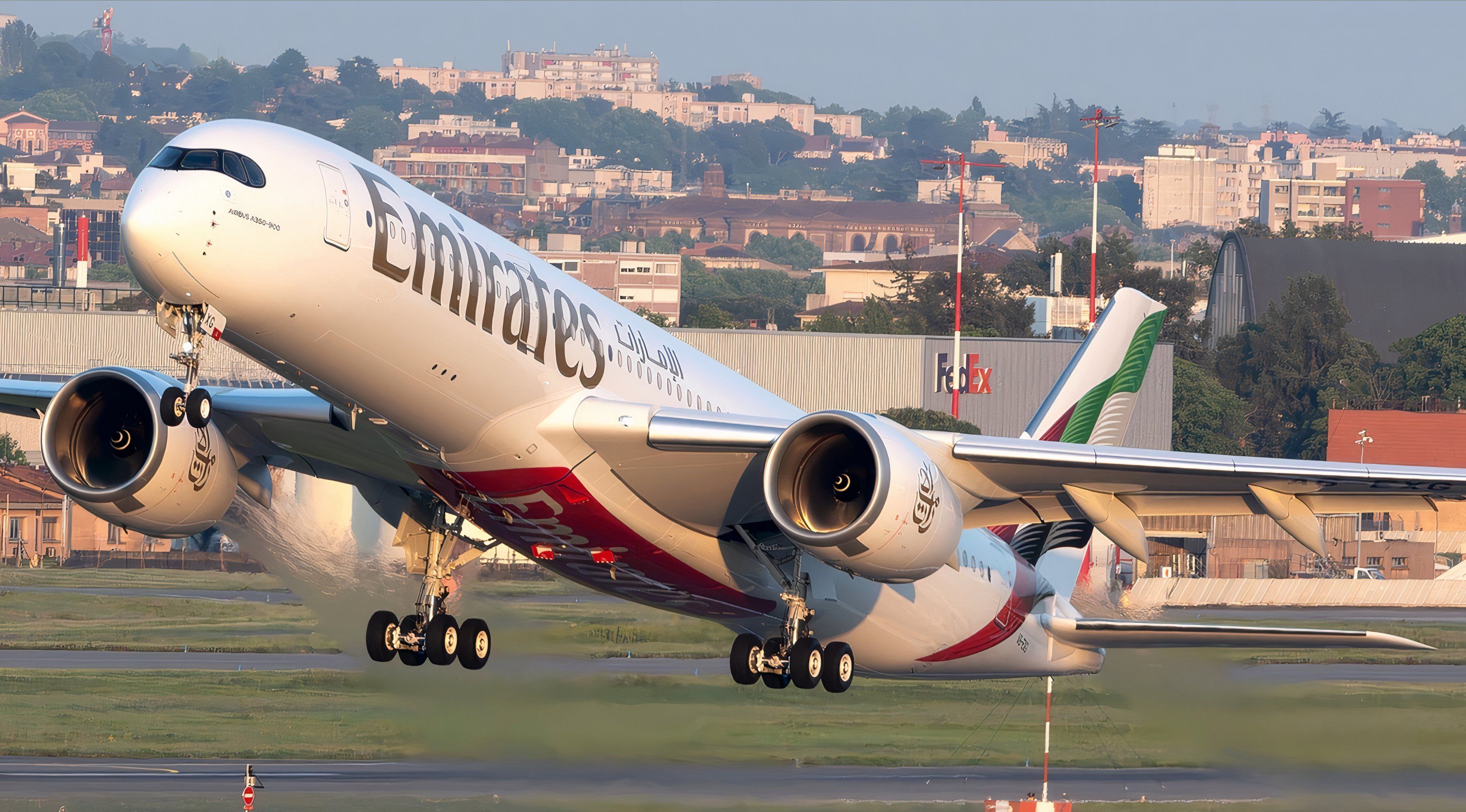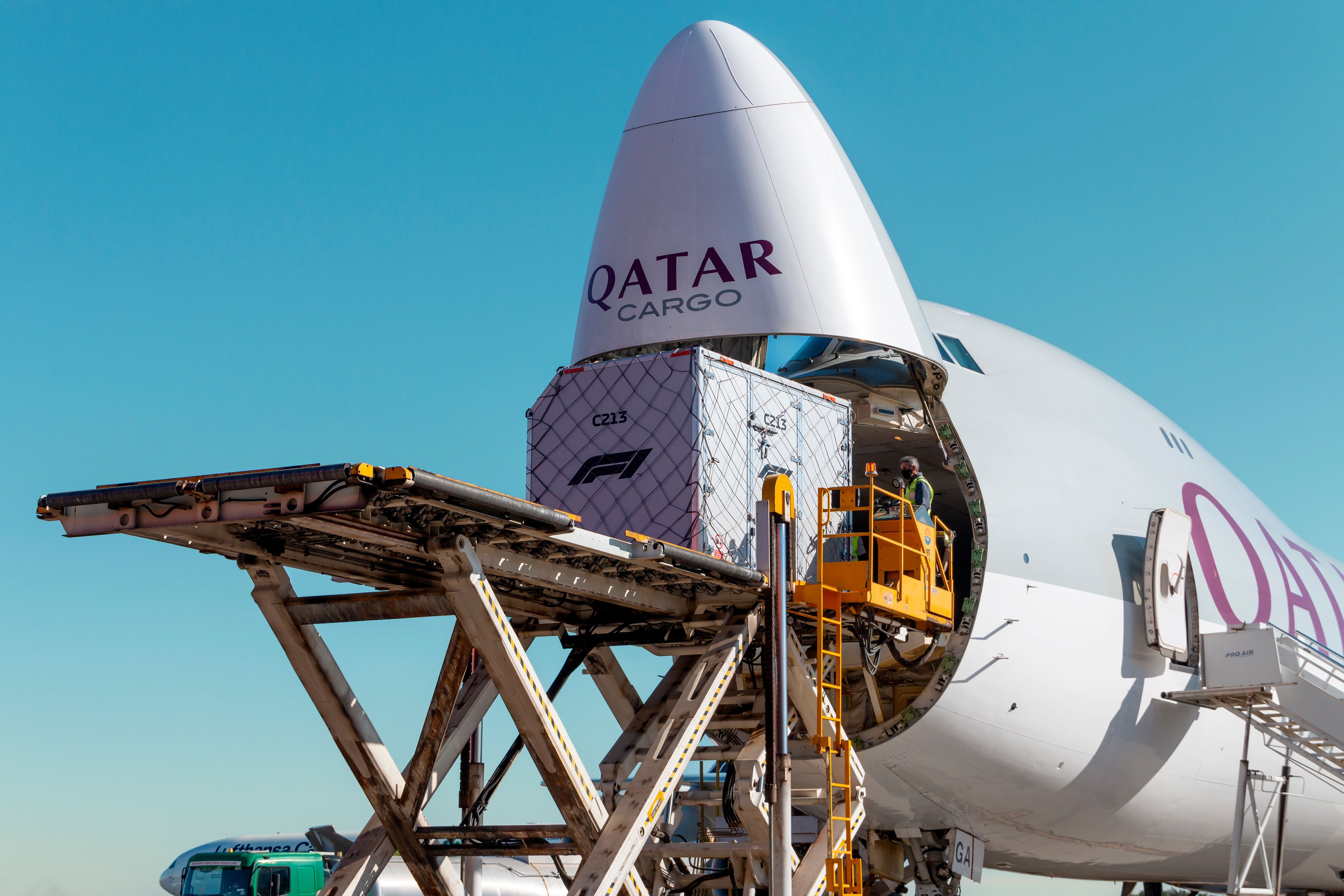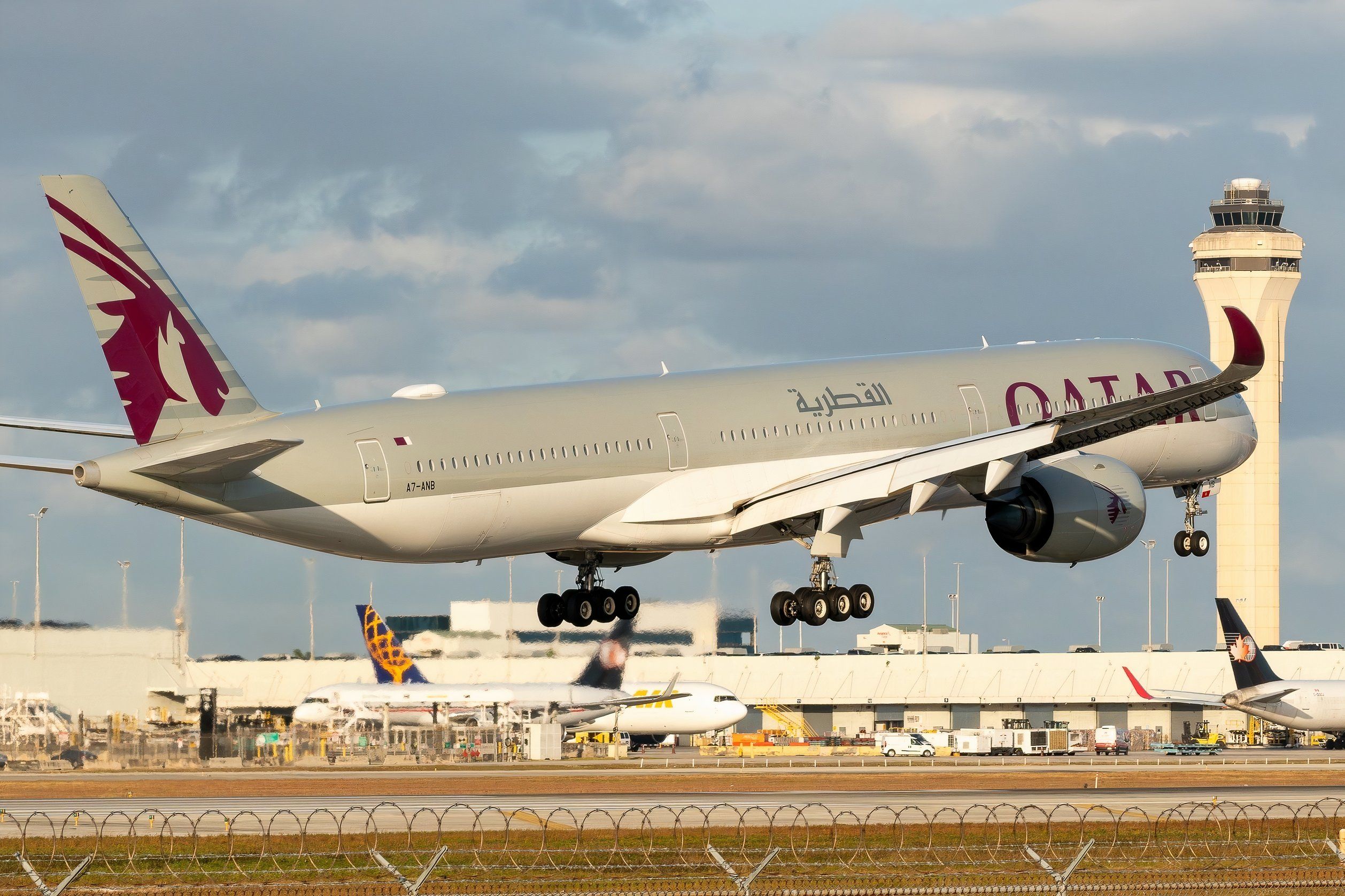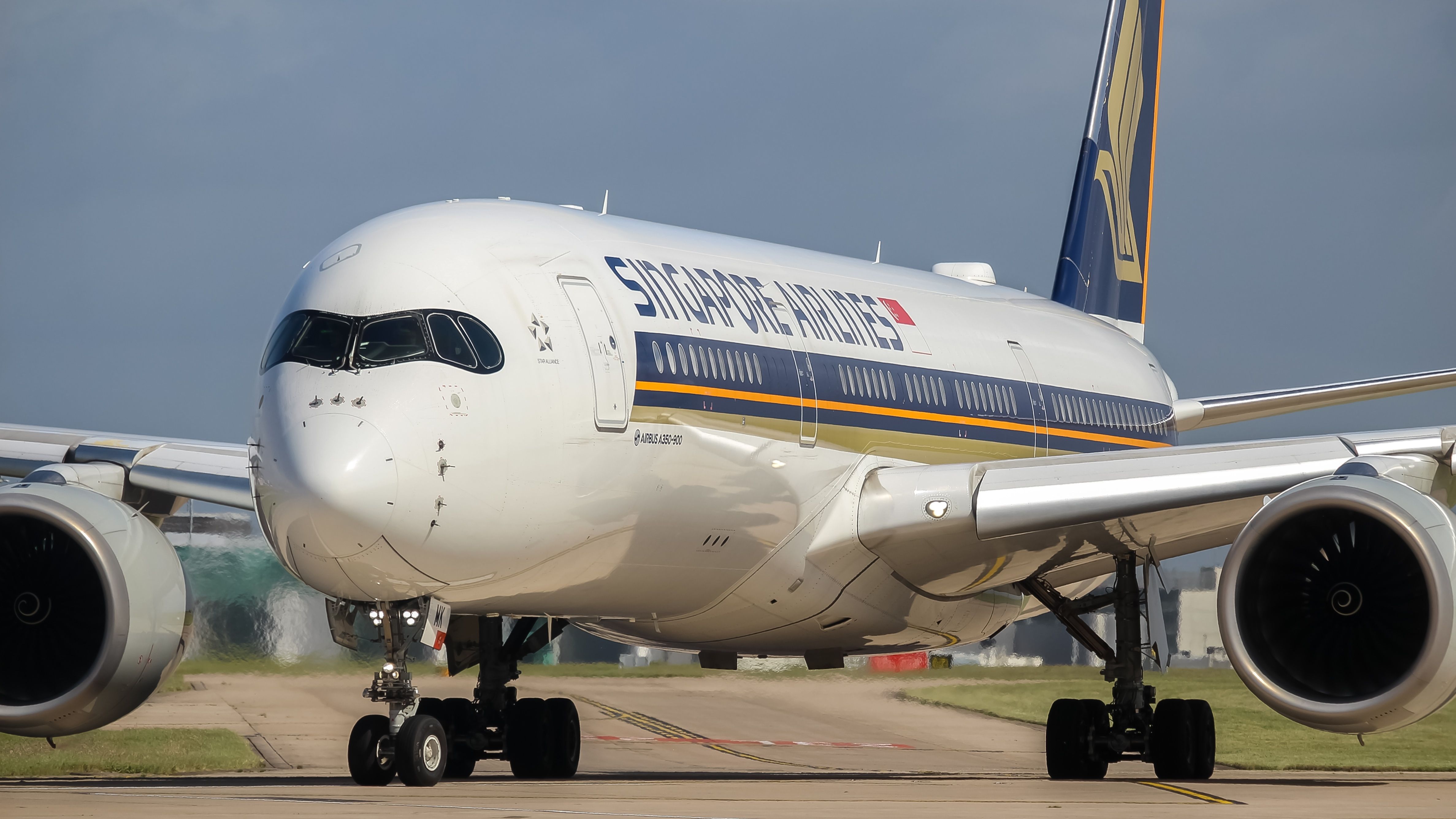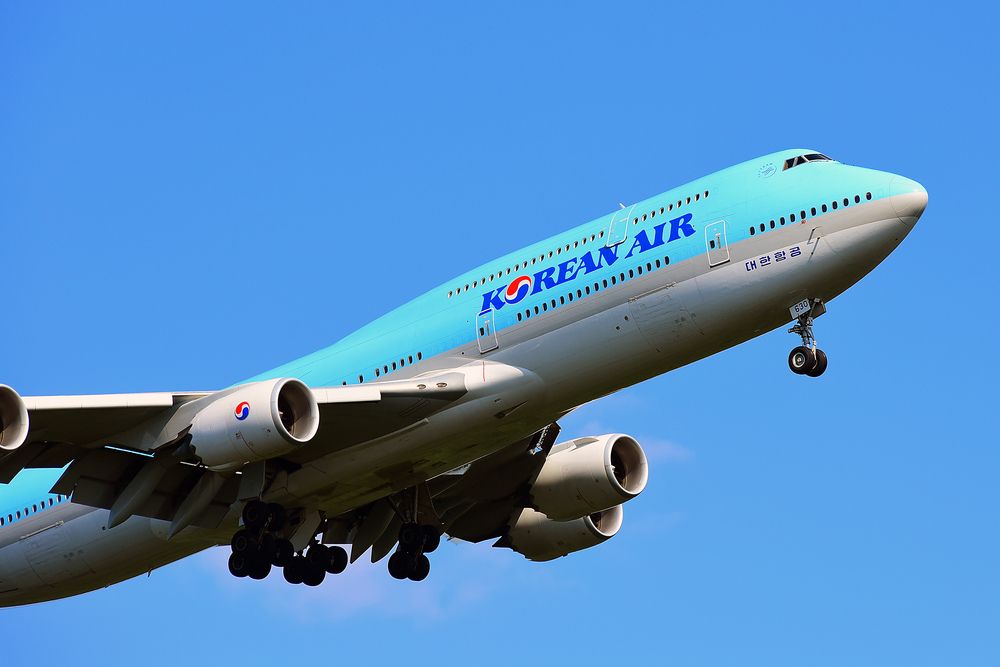Is the Airbus A350 family of airliners larger than the Boeing 747 Jumbo family of airliners? The short answer to this question is no, as the Boeing 747 remains one of the largest aircraft ever made. Indeed, only a few aircraft approach the size and payload of some of its variants, such as the Lockheed C-5M Super Galaxy and the Antonov An-124 Ruslan. The only aircraft comprehensively larger than the Boeing 747-400 or Boeing 747-8 today is the Airbus A380.
Even so, the A350 has the edge by some measures depending on which 747 variant it is being compared to. For instance, its engines are comprehensively larger by both size and thrust compared to those found on the 747 of any variant. As a much newer aircraft that first entered service in 2015, the Airbus A350 also outperforms the Boeing 747 by almost any metric that airlines care about. Here is what to know about the size difference between the A350 and the Boeing 747.
Examining The A350 & 747 Families’ Different Variants
The Airbus A350 is the largest Airbus aircraft in production today, and its Airbus A350-900ULR version is the longest-range commercial airliner flying, with a distance of around 9,700 nautical miles. The two core A350 variants are the A350-900 and the stretched A350-1000, and this article will focus on the larger A350-1000 model. With Boeing’s ‘jumbo jet,’ this article will focus on the original 747-100 variant and the latest 747-8 model, largely skipping those in the middle.
The Boeing 747 family came in many variants, starting with the 747-100, which entered service in 1970. The Boeing 747SP (Special Performance) variant was designed with a shortened fuselage to suit long-haul operations. That variant was only 184 feet long, some 47 feet shorter than the 747-100. There was also a 747-100SR built for Japan-based airlines that wanted a high-capacity aircraft for short-haul trips.
The two Boeing 747 variants still in use for regular scheduled passenger service are the 747-400 and the 747-8. The 747-8 proved unpopular as a passenger aircraft, and most of its 150-odd orders were for freighters. As such, today, the bulk of the world’s 747s are used to fly cargo. Airbus has still not launched the freighter (A350F) variant of its A350 family, meaning that all A350s in service today are for passenger transportation or VIP transport.
Comparing The Physical Dimensions Of The Boeing 747 & The A350
When it comes to length, at 242.1 feet, the A350-1000 is longer than most aircraft from the 747 family. As stated, the shortened 747SP was just 184 feet long, and the original 747-100 measured 231.9 feet in length, a measurement shared by the later Boeing 747-400. The Boeing 747-8 was lengthened to 250.2 feet, meaning that the Boeing quadjet ended marginally longer than the A350-1000. The final chapter may not have been written, as Airbus may stretch the A350-1000 to the so-called A350-2000.
When it comes to wingspan, the A350-1000 (and A350-900) are built to comply with Code E regulations at airports and have wingspans of 212.6 feet. This is longer than the original 747-100’s 195.5-foot wingspan and marginally longer than the 747-400’s 211.3-foot wingspan. However, the Boeing 747-8 has the longest wingspan at 224.4 feet.
|
Metric / Aircraft |
Airbus A350-1000 (per Airbus) |
Boeing 747-8 (per Boeing) |
Boeing 747-100 (per Boeing) |
|---|---|---|---|
|
Length |
242.1 feet |
250.2 feet |
231.9 feet |
|
Wingspan |
212.6 feet |
224.4 feet |
195.5 feet |
|
Tail height |
56.1 feet |
63.6 feet |
63.3 feet |
|
External fuselage width |
19.7 feet |
20.3 feet |
20.3 feet |
As a double-decker, the 747 is taller than the A350, at 63.3-63.6 feet at the tail, while the A350 is 56.1 feet tall. When it comes to external fuselage width, the A350 is surprisingly close, at 19.7 feet, while the 747 measures 20.3 feet. The 747 was designed to seat 10 abreast, while the A350 was originally optimized for nine abreast. Airbus has introduced a new production standard, narrowing the walls on each side by two inches, allowing airlines to more comfortably configure the A350 at 10 abreast.
What About Maximum Takeoff Weight & Payload?
When it comes to maximum take-off weight (MTOW), the Boeing 747 is greater, although not by as much as could have been expected, at least for the original 747-100. The 747-8 came with an MTOW of 978,000 lbs, making it one of the heaviest in the world, making it heavier than an Antonov An-124 and only behind the Airbus A380. The MTOW of the 747 increased over time with new variants.
The original 747-100 had an MTOW of 734,000 lbs, which is surprisingly close to the A350-1000’s figure of 710,000 lbs, given that the A350-1000 is made of more lightweight materials and only has two engines. The maximum payload comes even closer, with the 747-100 having a figure of 134,500 lbs, only marginally ahead of the A350-1000’s 130,100 lb total.
|
Metric / Aircraft |
Airbus A350-1000 |
Boeing 747-8 |
Boeing 747-100 |
|---|---|---|---|
|
MTOW |
710,000 lbs |
987,000 lbs |
734,000 lbs |
|
Max Payload |
130,000 lbs |
154,300 |
134,500 lbs |
|
Max Payload freighter |
244,700 lbs |
308,000 lbs |
n/a |
The Boeing 747-8 has the biggest payload of 154,300 lbs, while the A350-900 manages 116,800 lbs. Meanwhile, the extended-range A350-900ULR, which carries more fuel to enable it to fly nonstop from Singapore to New York City, only has a maximum payload of 97,000 lbs. The 747-8 freighter has a figure of up to 308,000 lbs, while the upcoming A350F will have a total of 244,713 lbs.
Passenger Capacity & Range
When it comes to range, the A350 is a fundamentally newer aircraft boasting more modern and efficient engines than even the 747-8. Consequently, it significantly outranges the ‘jumbo jet,’ with both variants of the A350 outperforming all variants of the 747. Airbus says that the Airbus A350-1000 comes with a range of 8,700 nautical miles, compared to 8,100 nautical miles for the -900 and 9,700 nautical miles for the A350-900ULR.
The original Boeing 747-100 had a relatively poor range by today’s standards, with a figure of 5,300 nautical miles. This was increased to 7,260 nautical miles for the 747-400 and 7,730 nautical miles for the 747-8. When it comes to seating capacity, the 747-100 had a typical three-class seating capacity of 366 passengers, while the 747-8 seated 467 in a typical three-class configuration.
|
Aircraft / Metric |
Airbus A350-1000 |
Boeing 747-8 |
Boeing 747-100 |
|---|---|---|---|
|
Range |
8,700 nautical miles |
7,730 nautical miles |
5,300 nautical miles |
|
Typical three-class seating |
350-410 |
467 |
366 |
|
Max single-class seating |
480 |
605 |
550 |
The A350-1000 fits around 350-410 passengers in a typical three-class configuration and has a maximum single-class seating capacity of 480 passengers. Meanwhile, the 747-100’s single-class maximum seating capacity is around 550 passengers, and the 747-8’s certified maximum passenger capacity is 605 passengers.
A350 Vs 747: Engine Thrust
When it comes to engine thrust, the larger quad-engined 747 (all variants) has a greater combined thrust than the twin-engined A350 (both core variants), although the latter carries larger and more powerful engines than the US-built quadjet. The original Boeing 747-100 was the world’s first commercial aircraft to come with high-bypass turbofans. Original variants were optionally powered by the Pratt & Whitney JT9D, Rolls-Royce RB211, or General Electric CF6, producing around 206,000 lbf.
The Boeing 747-8 is exclusively powered by four GEnx2B67 engines that provide 266,000 lbf. Early 747 engines individually provided around 46,000 lbf each, rising to around 66,500 lbf for the 747-8 for each engine. The Airbus A350’s XWB engines are physically larger with a fan diameter of 118 inches, while the GEnx has a fan diameter of 104.7 inches. Original PW JT9D engines have a fan diameter of 93.4 inches.
The Airbus A350-1000 is exclusively powered by two Rolls-Royce Trent XWB engines providing 194,000 lbf. At 97,000 lbf per engine, this represents around double that of early 747-100 engines and much more than individual engines on the 747-8. The smaller A350-900’s engines provide 84,000 lbf each.
The Boeing 747 Is Larger With Caveats
Overall, the Boeing 747 is larger than the Airbus A350, albeit with many asterisks. The 747-8 is much larger than the A350-1000 by almost any measure except for individual engine size and thrust. Meanwhile, the A350-1000 is larger than the smaller 747-100 by wingspan and length, but not by standing tail height. The A350 scores better on range, but that is performance-related and not size-related.
In some respects, the A350-1000 is similar to the original 747-100 when it comes to capacity, thrust, and payload, with the 747-100 still having the edge in other metrics. The French leisure carrier, French Bee, has A350-900s configured with 411 seats, while it also has A350-1000s configured with 480 seats. Meanwhile, the German flag-carrier, Lufthansa, has 747-400s configured with 371 seats and 747-8s configured with 364 seats.
Of course, larger aircraft don’t necessarily carry more passengers, as seating capacity is heavily influenced by the ratio of premium and non-premium seats that an airline wants in its aircraft. There are also other factors at play, like how far the routes are that the aircraft services. In short, the Boeing 747 is larger than the A350, but that doesn’t mean it is the largest in everything. The answer is also influenced by what variant of what family is being compared to.



